If you’re anything like me, you know the importance of breaking in a new pair of shoes before wearing them out. However, you also understand that sometimes this process can be a little uncomfortable – especially if the shoes rub your heel. This article will discuss how to break in shoes that rub your heel in no time! Read on for more.
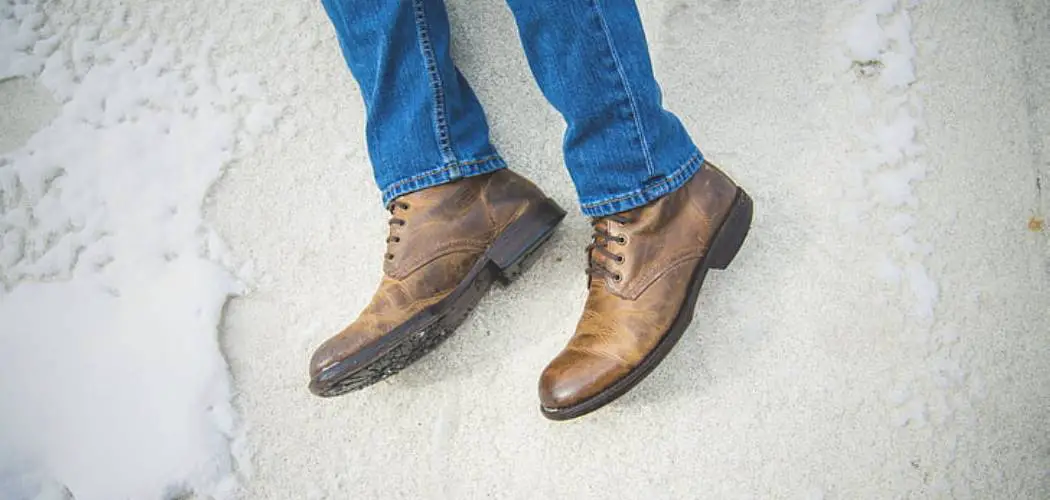
Shoes are a huge investment and can be a significant purchase for most people. Unfortunately, one of the biggest mistakes you could make is buying a pair that doesn’t fit well. When shoes aren’t comfortable or don’t fit, they will be pretty obvious when you’re wearing them. You may end up with a pair of shoes that rub your heel no matter how hard you try to break them in. Fortunately, there are ways to solve this problem!
Factors to Consider When Buying Shoes
Here Are Few Factors to Consider When Buying New Shoes:
Shoe Material
The material used for the shoe upper is essential as certain materials tend to stretch more than others. How quickly a shoe stretches and how much it stretches will depend on the material and how tight you feel you want your shoes to fit.
How Wide or Narrow the Shoe Is
Whether or not your feet are narrow or wide, this factor is crucial when purchasing new shoes. How comfortable you’ll be in a pair of shoes depends on whether they’re too wide, too narrow, or just suitable for your foot. If they’re too tight, we suggest getting a larger size so that you can still tighten them by using laces; if they’re wider than necessary, consider trying different styles until you find one that fits your foot perfectly.
How Well a Shoe Fits
If you’re considering purchasing a pair of shoes from an online retailer, the best way to determine how well they’ll fit is by using shoe size charts. For example, if your heel hangs off an edge in between sizes when trying on a shoe in-store, you should go with the smaller size for narrow shoes and the larger size for wide shoes.
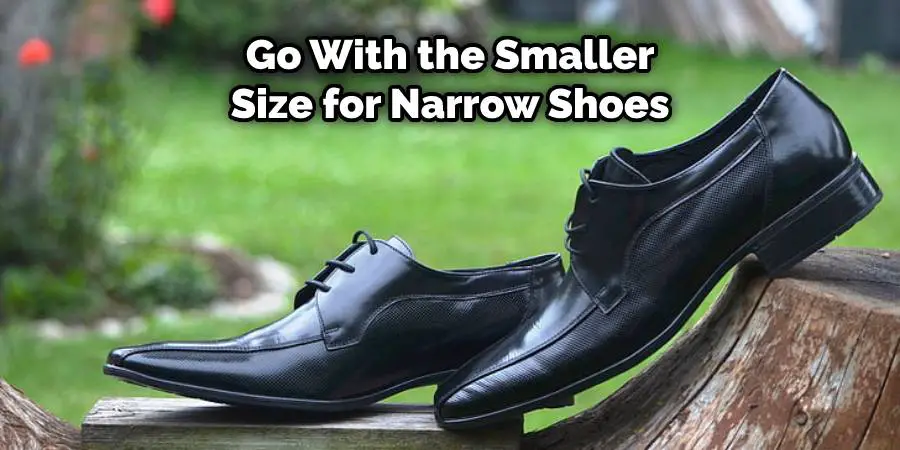
How well shoes fit varies depending on heels, boots, sandals, or flats; if you want to get the most out of them and enjoy your purchase longer, we suggest choosing styles that suit your feet accordingly.
How You Will Be Using Your Shoes
How you will be using your new footwear determines what type of shoe you should be choosing. For example, if you’re looking for a pair of everyday shoes, we advise going for low-heeled and appealing styles such as ballet flats and loafers; these will ensure they last longer and provide more comfort than heels.
Your Foot Shape and Size
How you’re shaped, and size also comes into consideration when purchasing shoes. How flattering a shoe looks on your foot is essential as certain styles will only suit those with long, slender feet, while others that show off your toes may not be attractive on those who have short toes.
If the toe of a shoe presses down against one of yours, we recommend going for a smaller size so that they don’t slip off or leave red marks beneath your toes.
Try Shoes With Socks On
How well a shoe fits with socks on is crucial as this will allow you to determine whether or not the boots fit too loosely or too tightly. How uncomfortable a shoe feels upon first putting it on can quickly be resolved by wearing socks for a few hours; if they don’t feel better after this time, we recommend returning the footwear and finding something else that’s more suitable for your needs.
6 Ways on How to Break in Shoes That Rub Your Heel
Way 1: Using a Pair Of Socks to Make Shoes More Comfortable
Take a clean, dry pair of socks and wear them on your foot. Put your shoes on afterward, or place the sock near where you intend to break in the shoes. This will soften the shoe’s material and maximize its ability to stretch out accordingly.
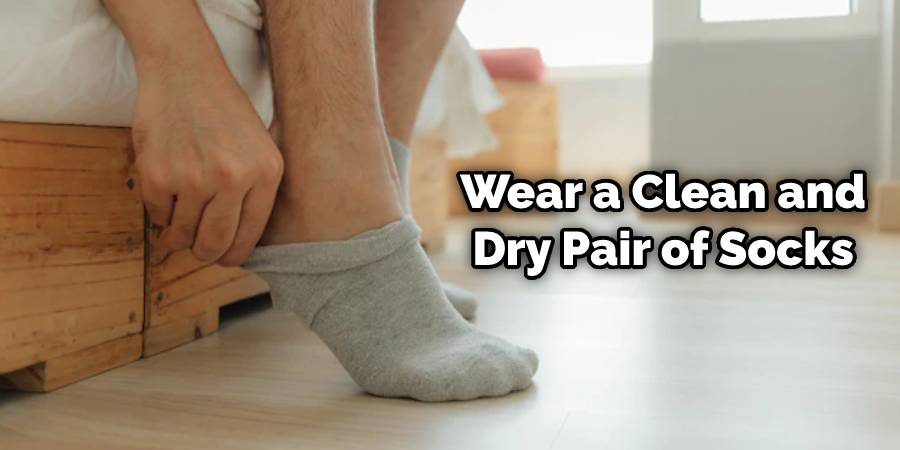
As the socks rub against the shoes, they rub off any excess materials that are not needed in making them more comfortable for you to wear. How often you apply this method depends on how big or small your feet are. However, it will usually take an hour or two to work if you break into shoes you wear on your feet every day.
How often you apply this method also depends on how much room there is between the ends of your toes and where your shoes rub against them. How frequently you do this predominantly affects how long it takes to completely break-in your pair of shoes. If there is plenty of space, applying this method once or twice should be enough before wearing the shoes again.
If you feel like after using this method, the area where your heels rub against the insides of your shoes is still too uncomfortable, wetting the socks with saline solution (2 tablespoons) and vinegar (1 tablespoon) can help make them more flexible and comfortable for you to wear. How often you should wet the socks depends on how big or small your feet are.
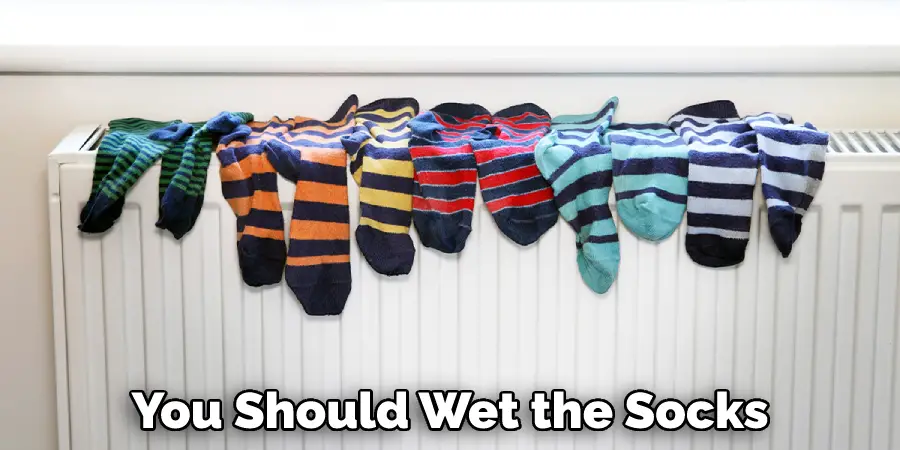
Way 2: Use Comfortable Insoles
One of the primary reasons your shoes are uncomfortable to wear is because they do not have insoles that feel soft against the soles of your feet. How often you apply this method depends on how big, or small your feet are if you find yourself constantly needing to take out and replace the insoles when putting on your shoes, then applying this method once a week would be sufficient before wearing them again.
Replace the shoe’s soles with more comfortable ones for you to wear in them all day long. How often you should do this also depends on how much room there is between the ends of your toes and where your shoes rub against them.
How well this method works for breaking in shoes predominantly affects how long it takes to break your pair of shoes completely. How often you should do this depends on how big or small your feet are and the time it takes for your heels to become more comfortable wearing them.
Way 3: Using Heat to Soften Shoe Materials
Although this method is more time-consuming and requires more patience, it may be the only option you have if you don’t want to take your shoes back and exchange them. This is especially true if you bought the shoes on sale or at a thrift store, as they won’t let you return or exchange them once they’ve been worn.

Use a hairdryer to apply heat all over the material of your heels (avoid using heat near areas that aren’t leather). Once heated up nicely, begin stretching and bending your shoe until it starts breaking in where needed. It typically takes several minutes on each foot for decent results, so prepare to be patient if this is your method of choice. Once broken in, try to avoid wearing the shoes when it’s below freezing outside, as you will likely have a tough time breaking them in again.
Way 4: Use a Shoe Stretcher to Fix the Sizing
Although shoe stretchers are mostly used to add width and length to shoes that have shrunk or become too tight after a few washes, they can also stretch out narrow heels that cause discomfort after walking around for a few hours.
It depends on who made the shoe and how much material they added between your toes and heel. In some cases, you might not be able to fix this type of problem no matter what you do since it isn’t a sizing problem. However, as you probably know, some shoes – especially heels – are just too narrow to begin with, no matter how much time and effort you put into breaking them in.
This is because the board that makes up part of the foundation for your feet might not be wide enough to accommodate so many toes or distribute weight evenly between toes. Forcing your feet to squeeze inside this type of shoe may lead to corns, calluses, blisters, bunions, and hammertoes.
It’s also worth noting that some people have one foot that’s slightly longer than the other, so breaking in a shoe properly on their shorter foot doesn’t automatically mean they’ll be able to do it on their longer foot. Nevertheless, this is a crucial way how to break in shoes that rub your heel.
Way 5: Using Moleskin to Prevent Blisters
If your shoes give you blisters or cause your heels to become sore, then applying moleskin directly to the area causing discomfort is a must. How often you should use this method depends on how much time it takes for the moleskin to wear out and come off after being exposed to movement all day long.
You Can Check It Out to Stretch Pleather Shoes
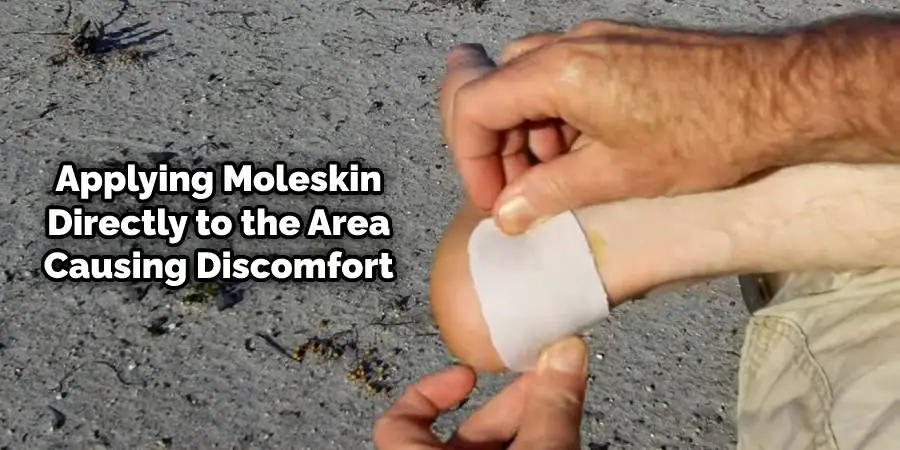
While not many people are aware of the benefits of using moleskin instead of insoles, it can save you quite a bit – both in terms of money and preventing discomfort when breaking in certain types of shoes. How often you should apply this method depends on how big or small your feet are and how easily you develop blisters and experience pain in your heels.
Way 6: Get Help From Professional Shoe Stretchers
If you can’t break in your shoes, no matter how much time and effort you put into the process. However, almost all types of shoes will need to be stretched out during their life cycle. How often this needs to happen depends on the material used to make them and their specific design.
For instance, most leather shoes with synthetic soles are more durable than ones with rubber soles since the latter tend to wear down faster over time. On the other hand, suppose you’ve had your favorite pair of heels for at least six months or longer with minimal improvement after trying each of these methods multiple times. In that case, it might be time to consider having them stretched out by a professional.
Treatments can help reduce the discomfort caused by bunions, hammertoes, and other similar problems that make wearing certain types of shoes difficult or impossible. How much stretching your shoe needs before you’re able to wear them for an entire day without any noticeable pain or discomfort depends on the severity of the problem and how long it takes to solve it – if at all. These ways will help in how to break in shoes that rub your heel.
Why Do New Shoes Hurt?
When breaking in new shoes, the pain you feel is called a “shoe bite.” How you break in your boots depends on the type of shoe, but there are some general rules for making the process more comfortable. How long it takes to break in a pair of shoes varies from person to person, depending on factors like foot shape and size, material tolerance, how often they are worn, and even where you live (soles tend to be stiffer where it’s colder).
Breaking in new shoes can usually be accomplished within one or two days if enough time is needed. Shoe bites often result from suddenly wearing a new pair of shoes that have never been broken in before. Shoes that fit perfectly every day might rub one day simply because they are not yet broken in. How quickly your boots break in depends on the shoe, your activity level, and the shape of your foot.
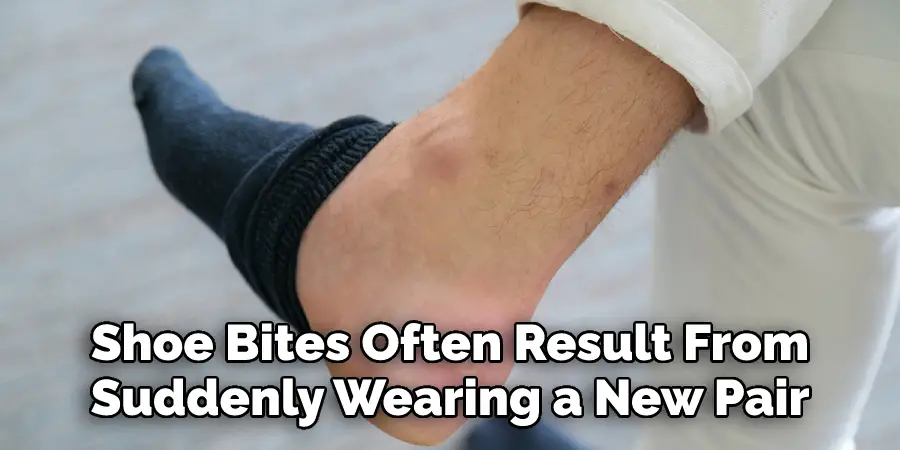
Frequently Asked Questions
Is Heel Slippage Normal in New Shoes?
Heel slippage is a common issue people experience when they switch to new shoes. It can be caused by a few different things, such as the shoes being too tight or the wrong type of heel. If you’re experiencing heel slippage, there are a few things you can do to try to fix it:
1. Try wearing your shoes in smaller sizes – This is likely to be the most effective solution because it will let your feet adjust to the new shoes.
2. Try adding cushioning or padding to the inside of your shoe – This will help to absorb shock and prevent heel slippage.
3. Wear socks with your shoes – This may help keep your feet warm and moist, which will help them adjust more easily to the new shoes.
4. Purchase a heel lift – This is a small device that is inserted into the shoe and helps raise the heel of the shoe off the ground, which can help prevent heel slippage.
If you’re still experiencing heel slippage after trying these solutions, it might be time for a new pair of shoes! In that case, make sure to shop around and find something that fits your needs perfectly.
How Do You Break in Shoes Fast?
When you’re buying shoes, it’s important to make sure that you break them in properly. This will allow the shoe to conform to your foot shape and create a better wearing experience. Here are four easy steps for breaking in shoes fast:
1) Wear them around the house while doing chores or walking around. This will help get the feet used to being in those particular shoes and reduce potential rubbing or chafing problems down the road.
2) Take them outside for a short walk first thing in the morning if possible, before it becomes too hot or humid out. Walking on different surfaces can also help toughen up the leather and prepare it for more strenuous use later on.
3) Use a pumice stone (or similar type of tool) on rough areas of the heel, ball joints, arch area, etc … this will soften up these parts so they conform better when putting pressure onto other areas like toes/heel hold downs which feel harder). And finally …
4) Put polish sparingly all over the upper part including the sides of heels(to keep from becoming overly slippery), treat any tears with moleskin as needed (and avoid water!), put socks back on & go about your day!
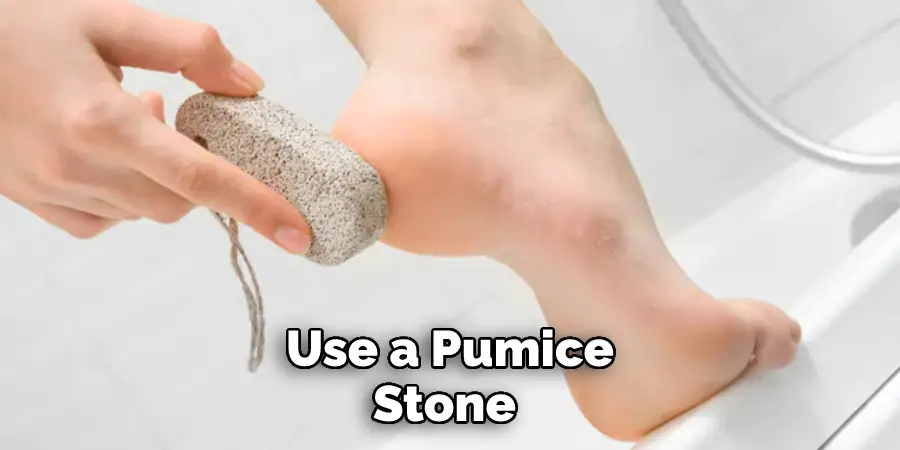
What is One Way to Reduce Heel Slippage?
One way to reduce heel slip is to wear a good quality pair of shoes that fit well and are made from materials that are reinforced at the toe and heel. Additionally, make sure your foot is resting evenly on the ground when you walk or stand by using supports such as insole pads or custom orthotics. And finally, practice proper gait by walking regularly and slowly throughout the day.
Does Heel Slippage Mean Shoes Are Too Big?
While it’s possible to have too-large shoes, heel slippage is not always a sign that your shoes are the wrong size. Heel slippage can be caused by many factors such as tight hips or calves, low muscle strength, and endurance, poor body alignment (particularly when standing), footwear that is too stiff or heavy for your feet, and more.
If you experience heel slippage on a regular basis when wearing normal-weight shoes, then it may be best to go up one-half size from your usual shoe size. If you experience heel slippage with heavier shoes or if it becomes severe enough to cause pain or instability while walking or running, then you should consider getting a new pair of sneakers/boots. In most cases, however, small adjustments to your current shoe sizing will alleviate any potential issue.
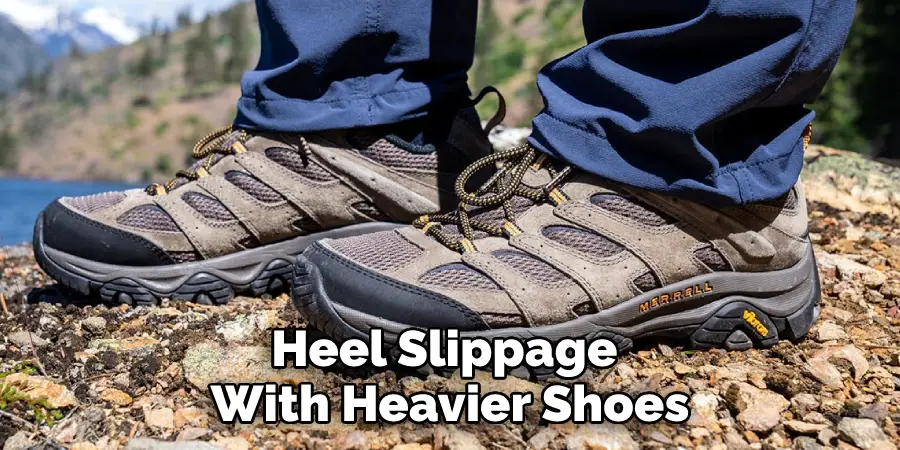
Conclusion
If you are unsure how to break in shoes that rub your heel, try taking them for a walk on pavement or wooded paths. It is essential that the surface be hard not to wear down the heel prematurely. You can also use ice packs and heat pads after each shoe-wearing session. Remember, these tips will help you avoid any potential blisters!
You may also read – How to clean leather insoles.


